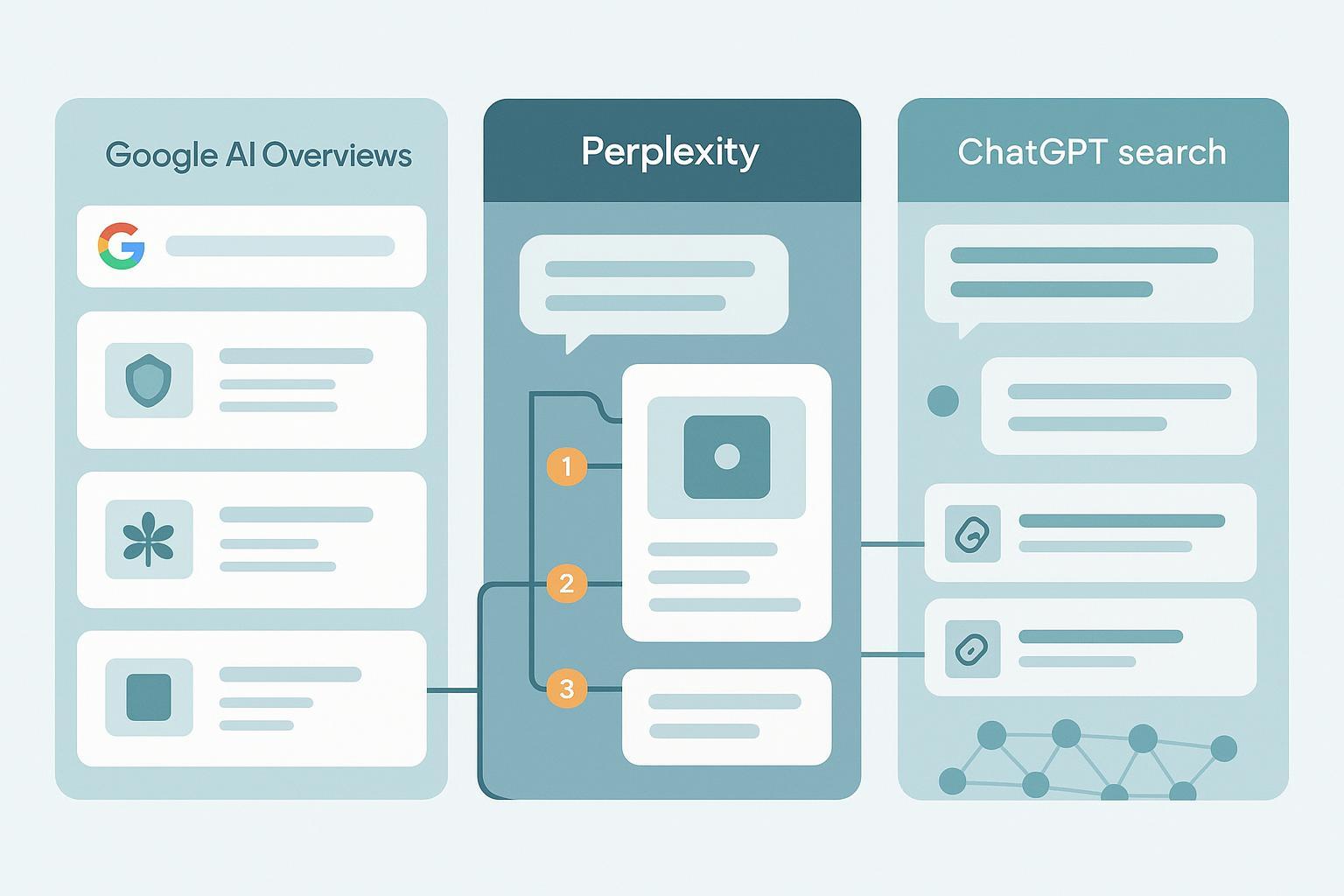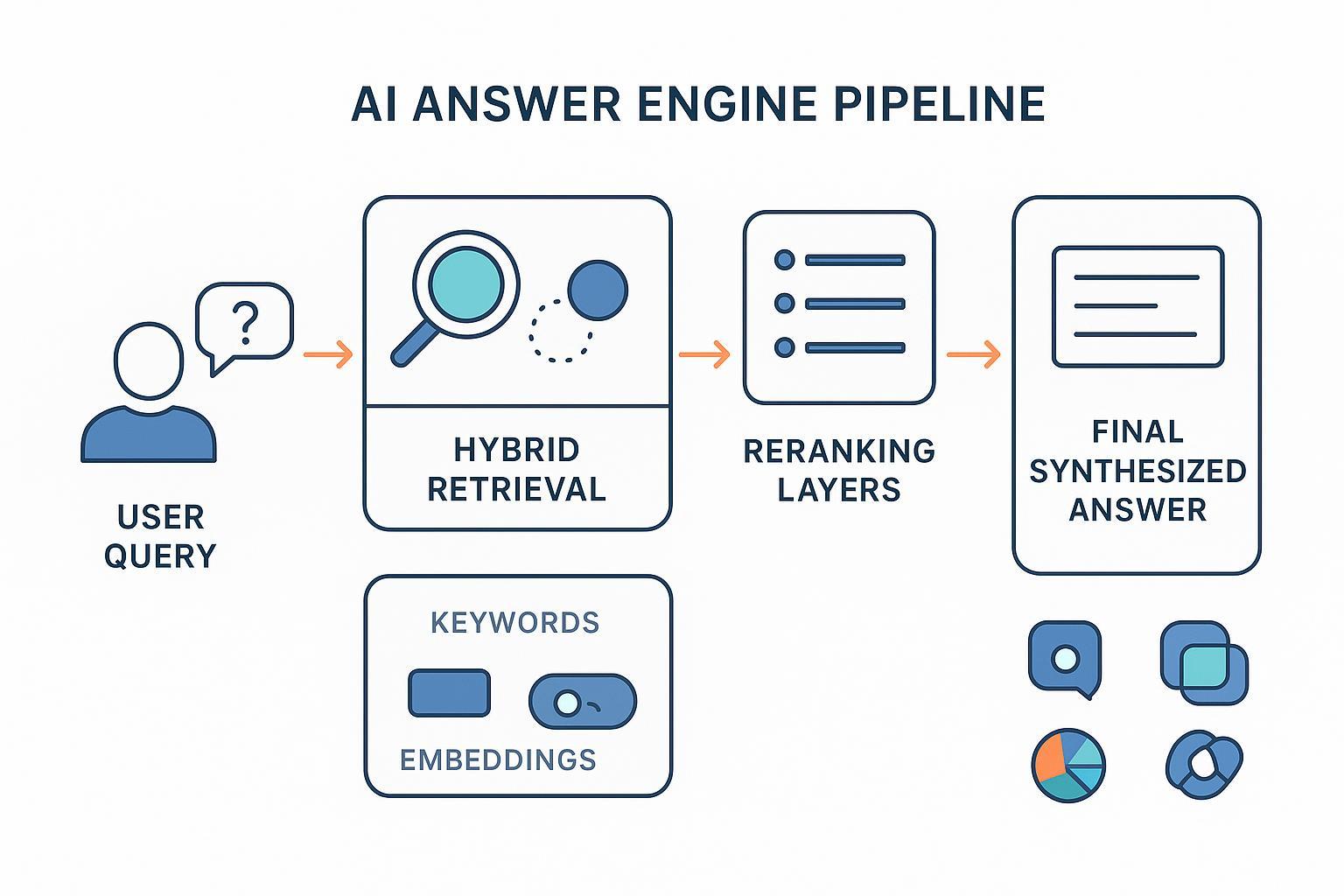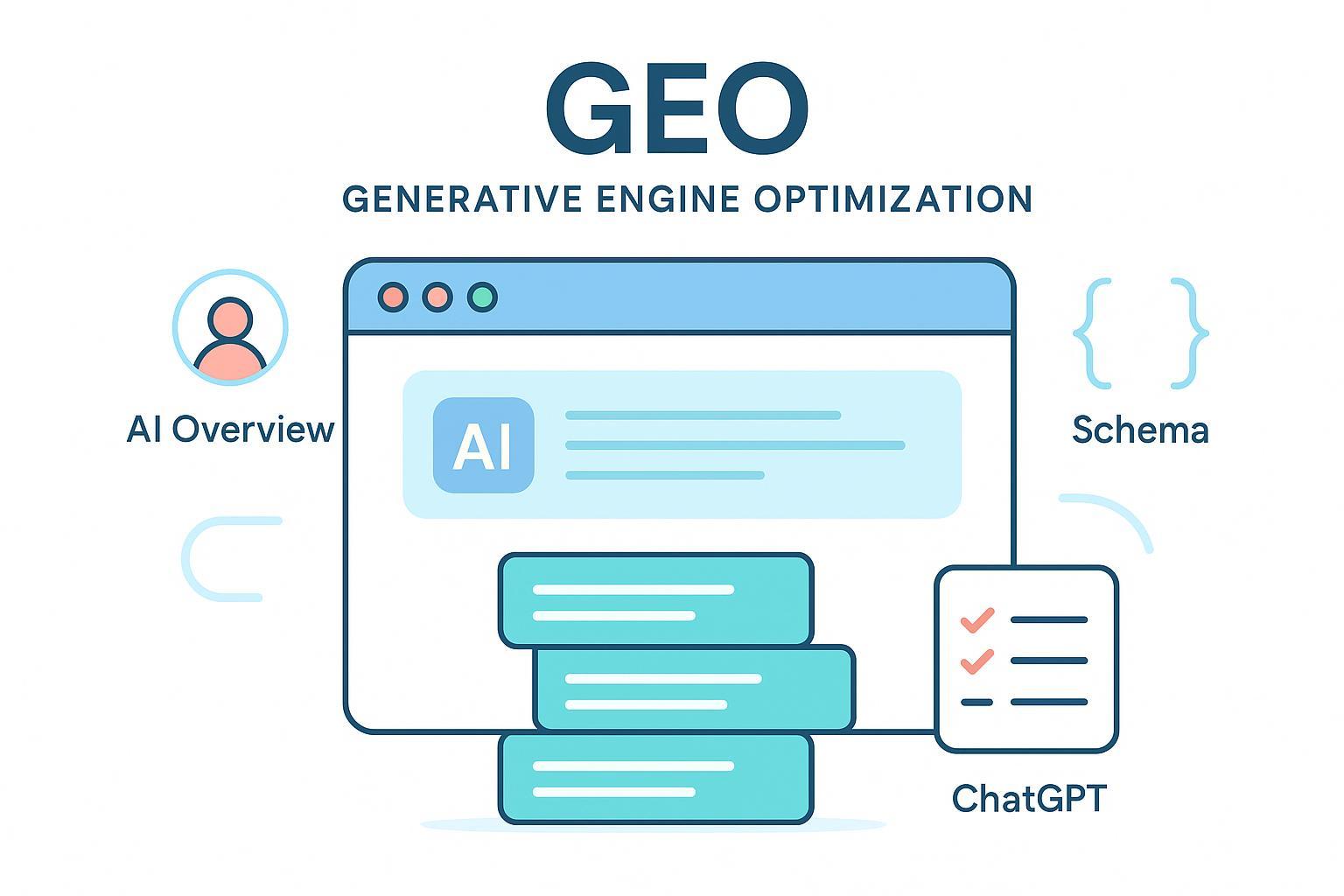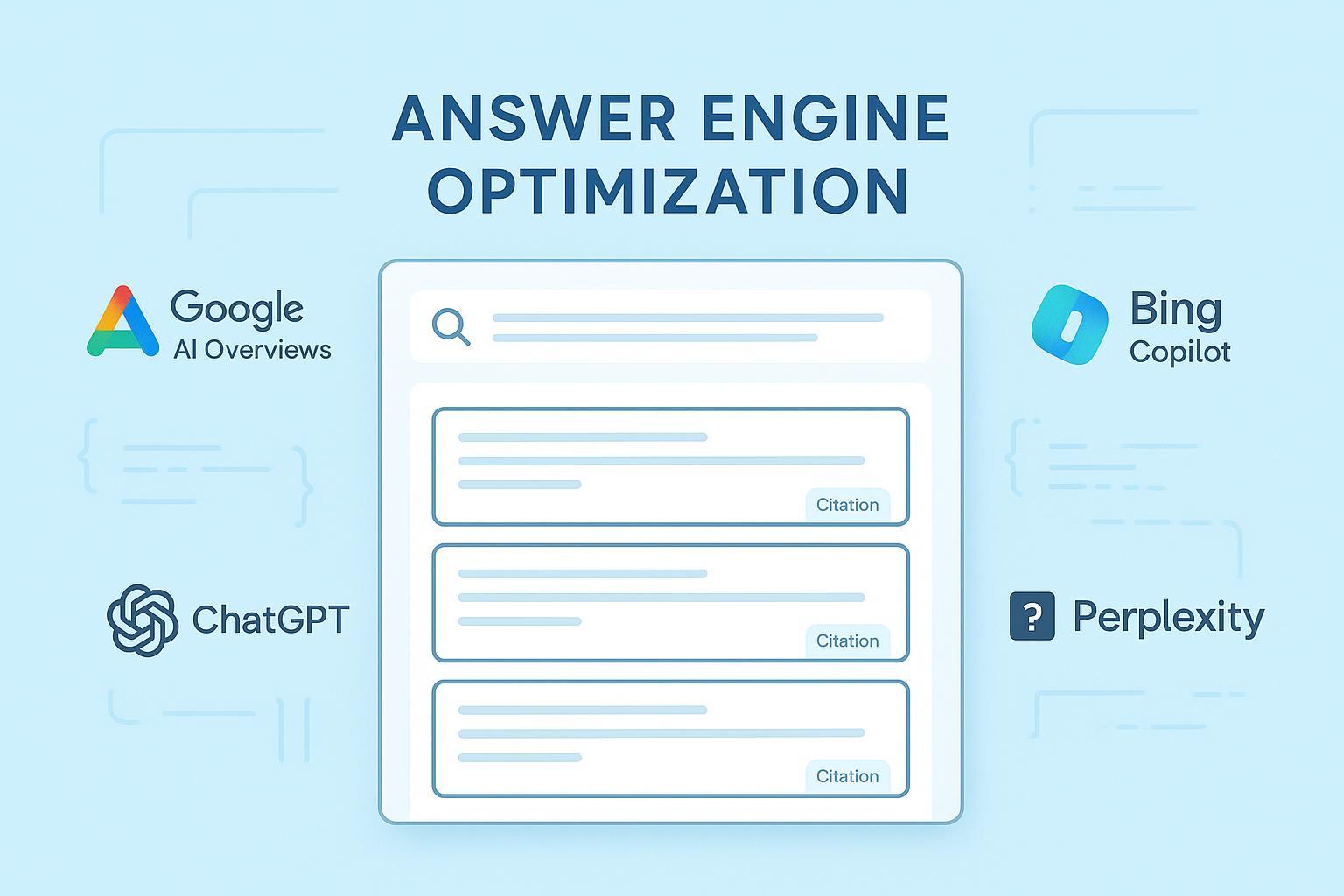2025 Best Practices: Authoritative Content AI Engines Trust and Cite
Proven 2025 workflows for creating authoritative content AI engines reference—E-E-A-T, schema markup, entity identity, citation, and governance for SEO leaders.

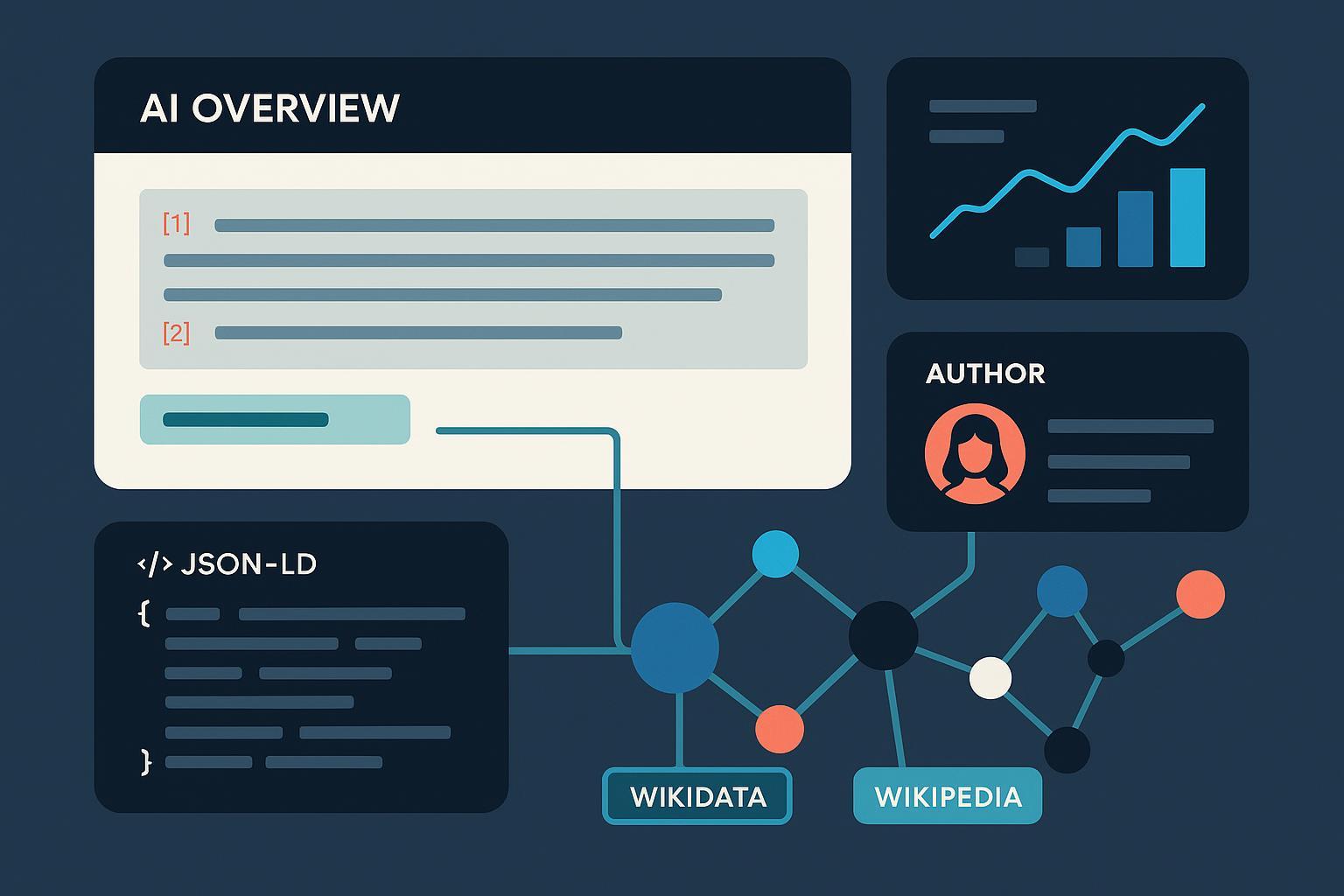
AI answer engines (Google AI Overviews, ChatGPT Browse, Perplexity, Copilot) select sources that are credible, machine-readable, and current. To be referenced consistently, make authority signals explicit (author expertise, primary citations), structure content for extraction (schema, FAQs, tables), and maintain freshness (dateModified, audits). The playbook below is distilled from field-tested implementations.
1) Build visible credibility: E-E-A-T that travels across machines
Machines can’t infer expertise from vibes. They look for verifiable signals tied to real entities.
-
Author identity that resolves to a person entity
- Publish full bios with credentials, affiliations, and scope of expertise. Mark up authors as Person with sameAs (LinkedIn, ORCID, PubMed, association profiles).
- Include editorial policy and corrections page; link it sitewide.
- Add Person and Organization schema to every Article; validate regularly. Google reiterates these fundamentals in 2025; see AI features and your website (Google, 2025).
-
Methods, sources, and timestamps
- Cite primary sources with descriptive anchors; include study years and sample context in prose.
- Surface when and how the page was updated; expose datePublished and dateModified in copy and JSON-LD. Google’s 2025 guidance on succeeding in AI Search emphasizes freshness and clarity; see Top ways to ensure your content performs well in AI Search (Google, 2025).
-
YMYL caution and disclosures
- For Your-Money-Your-Life topics, elevate SME review, legal approval, and explicit disclaimers.
- If AI assistance contributed, disclose process and human oversight per Using generative AI on your site (Google, 2025).
Practical placement checklist
- Author byline links to bio; bio links to credentials and publications
- “Reviewed by” SME for advanced/regulated topics
- “Last updated” timestamp + change log snippet near the top
- Editorial standards and corrections policy linked in footer
2) Make your content legible to machines: schema and entity identity
Raters and crawlers benefit when your content exposes unambiguous structure.
-
Minimum viable JSON-LD for articles
- Article or BlogPosting with headline, description, author (Person), publisher (Organization), datePublished/dateModified, mainEntityOfPage, citations (when present), and @id.
- Mark authors as full Person entities with sameAs to authoritative profiles. See Google’s Article structured data.
-
Organization identity
- Use Organization with logo and sameAs (official social profiles, Wikidata, Wikipedia if applicable). Keep names consistent across the web to reduce ambiguity.
-
FAQs and How-Tos when applicable
- For intent-qualified questions, add FAQPage markup with mainEntity Question/Answer pairs; see Google’s FAQPage structured data.
- For procedural content, use HowTo (steps, tools, durations) aligned to visible content.
-
- Give every major entity a stable @id URL, and use mentions/sameAs to connect to external knowledge bases where appropriate.
Example: minimal Article + Person + Organization JSON-LD
{
"@context": "https://schema.org",
"@type": "Article",
"@id": "https://www.example.com/articles/ai-authority-2025#article",
"mainEntityOfPage": "https://www.example.com/articles/ai-authority-2025",
"headline": "2025 Best Practices: AI-Trusted Content",
"description": "Actionable playbook to earn citations from AI answer engines.",
"author": {
"@type": "Person",
"@id": "https://www.example.com/about/authors/jane-doe#person",
"name": "Jane Doe",
"jobTitle": "Head of SEO",
"sameAs": [
"https://www.linkedin.com/in/janedoe/",
"https://orcid.org/0000-0002-1825-0097"
]
},
"publisher": {
"@type": "Organization",
"@id": "https://www.example.com#org",
"name": "Example Corp",
"logo": {
"@type": "ImageObject",
"url": "https://www.example.com/assets/logo.png"
},
"sameAs": [
"https://en.wikipedia.org/wiki/Example_Corp",
"https://www.wikidata.org/wiki/Q123456"
]
},
"datePublished": "2025-05-21",
"dateModified": "2025-10-01"
}
Validation workflow
- Add structured data during authoring (templates or CMS components)
- Test with Rich Results Test and Search Console’s URL Inspection
- Spot-check production JSON-LD weekly; fix drift and broken IDs
3) Format for answerability (AEO) without dumbing it down
Answer engines prefer content that’s straightforward to extract, but shallow, generic pages rarely earn trust.
-
Upfront 40–60 word answer or definition
- Provide a crisp, high-signal summary that a model could quote. Follow with depth and nuance.
-
Question-based headings and scannable structures
- Use H2/H3 phrased as questions and answer immediately. Break complex steps into bullet lists and numbered sequences. Include comparison tables when relevant.
-
FAQs for related intents
- Add a short FAQ that covers adjacent queries. Use FAQPage markup only when the Q&A appears on the page and is user-first.
-
Voice and natural language
- Write in plain English with short sentences. Avoid jargon unless you define it inline or via an internal link to a primer.
-
Technical SEO still matters
- Crawlability, clean URL structure, internal linking, and speed remain prerequisites. Google’s 2025 documentation reiterates technical hygiene in AI features and your website.
4) Governance and freshness: accuracy compounds trust
-
Assign ownership and cadence
- Each page gets a content owner, SME reviewer, and editor. Audit quarterly for consolidation, updates, or retirement. Maintain a visible change log.
-
- Pre-publication fact-check with source-of-truth links. Post-publication, document corrections and dateModified updates.
-
Disclosure and compliance
- For sponsored content, conflicts of interest, or AI assistance, disclose inline. Align with Google’s transparency guidance in Using generative AI on your site (2025).
-
Institutionalize it in your CMS
- Use templates to enforce bylines, schema, timestamps, and disclosure fields. Add automated checks (broken links, schema presence) in your CI/CD or publishing workflow.
5) Measurement: know if AI engines are actually citing you
-
Track inclusion and citations by engine
- Maintain watchlists for priority queries; record whether AI Overviews appear and whether your domain is cited or quoted. Studies indicate AI Overviews’ presence is material in 2025; see the AI Overviews impact study (Semrush, 2025).
-
Benchmark overlap with organic
- External analyses show a meaningful overlap between AI Overview sources and high-ranking organic pages; see AI Overviews 2024 recap research (SE Ranking, 2024). Use this to prioritize pages already near the top of organic results.
-
Operational KPIs (review weekly or biweekly)
- % of target queries with AI Overview presence
- % of those AIOs citing your domain
- Count of pages with complete Article/Person/Organization schema
- Author entity completeness (sameAs coverage, credentials in bios)
- Median days since last update on top pages
Workflow example: closing the loop on AI citation monitoring (tool-agnostic with one product illustration)
- Identify 50 priority queries and baseline whether AI Overviews appear and which sources are linked.
- Update target pages with missing E-E-A-T signals (author bios, citations), add/validate Article + Person schema, and include an upfront answer block.
- Re-check weekly for inclusion and citation changes; log deltas and correlate with updates.
- For multi-engine monitoring and sentiment in AI answers, teams often use platforms such as Geneo to track AI Overview citations, ChatGPT/Perplexity mentions, and historical changes across brands.
Disclosure: The workflow example references our own product, Geneo.
6) Advanced practices most teams miss
-
Strengthen entity identity beyond your site
- Create/maintain a Wikidata item when notability and sourcing permit; ensure consistent org and person names, locations, and roles across profiles. Connect via sameAs in your schema.
-
Tables for precision, prose for nuance
- Use tables for specs, comparisons, and step lists where exactness matters; expand with paragraphs to add context and caveats. This duality helps both machines and humans.
-
Don’t over-mark up
- Only use schema types that match visible content. Misaligned or spammy markup erodes trust and can disqualify rich features.
-
Evidence-first writing to reduce hallucinations
- Tie claims to primary documents and name the issuer/year in prose. Google’s 2025 AI Search guidance stresses citing authoritative, original sources; see Top ways to ensure your content performs well in AI Search.
-
Remember that AI features evolve
- Prevalence and selection patterns change. Keep an eye on 2025–2026 studies and your own logs; adjust target pages accordingly.
If you’re building deeper GEO/AEO programs, we’ve documented extended workflows and templates in our hub on advanced GEO and AEO workflows.
7) Pitfalls and realistic trade-offs
-
Silver bullets don’t exist
- Schema alone won’t make you “citation-worthy.” Without credible authors, primary sources, and useful depth, markup is cosmetic.
-
Over-optimizing for snippets harms trust
- Short answers are necessary, but if the rest of the page is thin, you’ll struggle to earn inclusion. Balance concise summaries with rigorous content.
-
Staleness is disqualifying
- Outdated stats and guidance reduce the chance of selection, especially in fast-moving topics. Avoid “evergreen” claims in dynamic domains; add review cadences.
-
Resource allocation
- Building author identity, governance, and entity footprints takes time. Start with your highest-impact pages and roll out iteratively.
8) 30/60/90-day rollout plan
-
Days 1–30: Foundation and audit
- Inventory top 100 pages by business impact and current rankings
- Add or enhance bylines, bios, and Person/Organization schema on top 30 pages
- Implement upfront answer blocks and tables where appropriate
- Set up measurement sheets or dashboards; baseline AI Overview presence and citations
-
Days 31–60: Expansion and governance
- Extend schema and E-E-A-T upgrades to the next 40–50 pages
- Launch editorial policy/corrections page; enable dateModified and change logs in templates
- Add FAQ sections (and FAQPage markup) to 10–20 pages aligned with user questions
- Establish a weekly fact-check routine for high-velocity topics
-
Days 61–90: Optimization and scaling
- Address gaps in entity identity (sameAs coverage; Wikidata/Wikipedia where appropriate)
- Improve Core Web Vitals on the slowest 20 pages
- Run a before/after analysis of AI citation rates; prioritize pages showing movement and iterate
- Create SOPs for ongoing audits and new content creation with built-in E-E-A-T and schema
FAQ
What content elements most strongly influence whether AI engines cite a page?
Credible authorship (with verifiable profiles), primary-source citations, clear structure (Article/FAQ/HowTo schema), concise answers near the top, and recent updates. Google’s 2025 documentation underscores technical and editorial fundamentals in AI features and your website.
How often should we update authoritative pages?
Quarterly is a good default for high-impact pages; faster-moving topics may need monthly checks. Always update dateModified and note material changes.
Do we need to add FAQs to every page?
No. Use FAQs when users have discrete, adjacent questions. Only mark up Q&A that appears on the page and genuinely helps readers; see FAQPage structured data.
Is there evidence that AI Overviews favor top organic sources?
Analyses from 2024 indicate most AIO citations come from pages already ranking well; see AI Overviews 2024 recap research (SE Ranking, 2024). This isn’t a guarantee, but it informs prioritization.
Next steps: If you’re building an AI citation program, explore our resources on advanced GEO and AEO workflows. For teams needing unified monitoring, consider a trial of Geneo in your stack.


